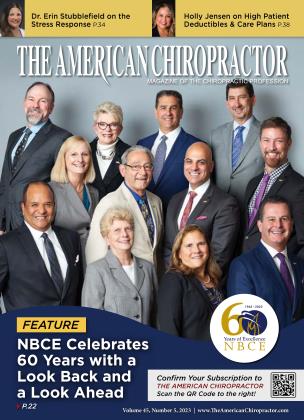What Are We Missing?
IN BRIEF
Technique
George Roth
DC, ND, CMRP
We now have incontrovertible evidence that bone expands with injury (See Figure 1). If you own a decent skeleton cast from a real specimen, you can also prove this to yourself by simply comparing the size of any number of anatomical landmarks: greater trochanters, distal femoral condyles and patellae, proximal humeral epiphyses, and, most importantly, the relative size of the articular processes and bodies of certain vertebrae. You will soon discover what got my attention over 45 years ago during my student years when I began to notice these size discrepancies and speculate about their importance.
As you make these observations, I urge you to reconsider what you may have been missing all these years but were never taught in school. Could the so-called vertebral subluxation, at least in part, be associated with these osseous changes (See Figure 2)? Have we been missing a key element of structural imbalance all along, and at what cost to our results, our credibility, and our success?
I submit that this crucial aspect of structural imbalance has been under our noses and our hands all along. Identifying them and effectively addressing them has made all the difference for practitioners around the world.
Dr. George Roth, DC, ND, CMRP, is recognized as an authority and pioneer in the field of physical medicine. He is the author of The Matrix Repatterning Program for Pain Relief and his contribution to the treatment of concussion has been acknowledged by Dr. Norman Doidge in his best-selling book, The Brain's Way of Healing. For more information, visit www.matrixinstitute.net or contact him at [email protected].
References
*Fantner GE, Hassenkam T, Kindt JH, Weaver JC, Birkedal H, Pechenik L, Cntroni JA, Cidade GA, Stncky GD, Morse DE, Hansma PK. Sacrificial bonds and hidden length dissipate energy as mineralized fibrils separate during bone fracture, Nat Mater. 2005 Aug;4(8):612-6. Epub 2005 Jul 17.
 View Full Issue
View Full Issue






